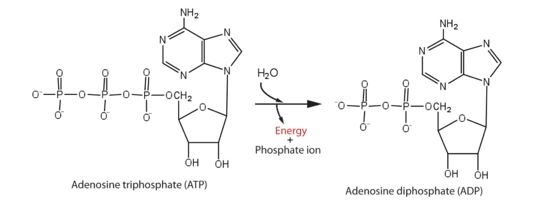Sandbox Reserved 1102
From Proteopedia
(Difference between revisions)
| Line 9: | Line 9: | ||
== Function == | == Function == | ||
| - | Zika is a [https://en.wikipedia.org/wiki/Double-stranded_RNA_viruses double-stranded RNA virus]. The [https://en.wikipedia.org/wiki/Viral_replication genome replication] of double- | + | Zika is a [https://en.wikipedia.org/wiki/Double-stranded_RNA_viruses double-stranded RNA virus]. The [https://en.wikipedia.org/wiki/Viral_replication genome replication] of double-stranded RNA viruses needs the intervention of a [https://en.wikipedia.org/wiki/Helicase helicase]. |
| - | Protein from Zika is composed of a protease domain at its [https://en.wikipedia.org/wiki/N-terminus N terminus] and a helicase domain at its [https://en.wikipedia.org/wiki/C-terminus C terminus]. The multifunctional helicase | + | Protein from Zika is composed of a protease domain at its [https://en.wikipedia.org/wiki/N-terminus N terminus] and a helicase domain at its [https://en.wikipedia.org/wiki/C-terminus C terminus]. The multifunctional helicase belongs to the superfamily 2 (SF2) helicase family. It is this helicase domain that has 5'-triphosphatase activity and that performs the critical and indispensable function of unwinding double-stranded RNA during Zika genome replication. So it is an essential enzyme involved in the cycles of [https://en.wikipedia.org/wiki/ATP_hydrolysis ATP hydrolysis] and behaves as a motor protein in the RNA unwinding. Helicase performs ATP hydrolysis at the 5′ end of RNA to generate energy. The phosphorus atom of the γ-phosphate group of the ATP molecule is attacked by a water molecule; then, the γ-phosphate group is released with ADP. With the use of the energy derived from ATP hydrolysis, helicase translocates along nucleic acid strands and unwinds the double-stranded RNA genome. |
[[Image:ATPhydrolysis.jpg | thumb | upright=3,5 | Energy from ATP hydrolysis]] | [[Image:ATPhydrolysis.jpg | thumb | upright=3,5 | Energy from ATP hydrolysis]] | ||
This is an essential step for viral RNA replication. It then provides conditions for the polymerization of RNA by an RNA-dependent RNA polymerase and the methylation of RNA by methyltransferase, which is crucial for Zika replication. In addition, it has been reported that the ATPase activity could alter viral replicative capacity and efficiency and consequently change the host innate immune response. | This is an essential step for viral RNA replication. It then provides conditions for the polymerization of RNA by an RNA-dependent RNA polymerase and the methylation of RNA by methyltransferase, which is crucial for Zika replication. In addition, it has been reported that the ATPase activity could alter viral replicative capacity and efficiency and consequently change the host innate immune response. | ||
| - | ATP hydrolysis is the most basic event to the function of this helicase; however, the | + | ATP hydrolysis is the most basic event to the function of this helicase; however, the other dynamic mechanisms remain largely unknown, impeding the further understanding of the function of Zika helicase. <ref> Mechanism of ATP hydrolysis by the Zika virus helicase, The Faseb journal, 27 sep 2018, X. Yang and H. Yang conceived of and designed the experiments; X. Yang, H. Tian, H. Chi, Z. Mu, and T. Zhang performed the experiments; C. Chen, K. Yang, Q. Zhao, Z. Wang, X. Ji, and H. Yang analyzed the data; and X. Yang, C. Chen, X. Liu, and H. Yang wrote the paper.; https://www.fasebj.org/doi/10.1096/fj.201701140R </ref> |
== Structural highlights == | == Structural highlights == | ||
| Line 41: | Line 41: | ||
== Disease == | == Disease == | ||
| - | [https://en.wikipedia.org/wiki/Zika_virus#Pregnancy Zika virus (ZIKV)] <ref name "Xiaoyun Yang et al">, "Xiaoyun Yang, Cheng Chen, Hongliang Tian, Heng Chi, Zhongyu Mu, Tianqing Zhang, Kailin Yang, Qi Zhao, Xiaohua Liu, Zefang Wang, Xiaoyun Ji, and Haitao Yang, Mechanism of ATP hydrolysis by the Zika virus helicase, FASEBjournal, pp 5250-5257„ </ref> is a member of the [https://en.wikipedia.org/wiki/Flavivirus Flavivirus ] genus, of the virus family [https://en.wikipedia.org/wiki/Flaviviridae Flaviviridae.] | + | [https://en.wikipedia.org/wiki/Zika_virus#Pregnancy Zika virus (ZIKV)] <ref name ="Xiaoyun Yang et al">, "Xiaoyun Yang, Cheng Chen, Hongliang Tian, Heng Chi, Zhongyu Mu, Tianqing Zhang, Kailin Yang, Qi Zhao, Xiaohua Liu, Zefang Wang, Xiaoyun Ji, and Haitao Yang, Mechanism of ATP hydrolysis by the Zika virus helicase, FASEBjournal, pp 5250-5257„ </ref> is a member of the [https://en.wikipedia.org/wiki/Flavivirus Flavivirus ] genus, of the virus family [https://en.wikipedia.org/wiki/Flaviviridae Flaviviridae.] |
The Flavivirus genus comprises the [https://en.wikipedia.org/wiki/Dengue_virus dengue virus ] (DENV), [https://en.wikipedia.org/wiki/Yellow_fever#Cause yellow fever virus], [https://en.wikipedia.org/wiki/West_Nile_virus West Nile virus], [https://en.wikipedia.org/wiki/Japanese_encephalitis#Virology Japanese encephalitis virus], and [https://en.wikipedia.org/wiki/Tick-borne_encephalitis_virus tick-borne encephalitis virus]. It is transmitted by daytime-active [https://en.wikipedia.org/wiki/Aedes Aedes] mosquitoes. | The Flavivirus genus comprises the [https://en.wikipedia.org/wiki/Dengue_virus dengue virus ] (DENV), [https://en.wikipedia.org/wiki/Yellow_fever#Cause yellow fever virus], [https://en.wikipedia.org/wiki/West_Nile_virus West Nile virus], [https://en.wikipedia.org/wiki/Japanese_encephalitis#Virology Japanese encephalitis virus], and [https://en.wikipedia.org/wiki/Tick-borne_encephalitis_virus tick-borne encephalitis virus]. It is transmitted by daytime-active [https://en.wikipedia.org/wiki/Aedes Aedes] mosquitoes. | ||
Revision as of 13:06, 16 January 2020
| This Sandbox is Reserved from 25/11/2019, through 30/9/2020 for use in the course "Structural Biology" taught by Bruno Kieffer at the University of Strasbourg, ESBS. This reservation includes Sandbox Reserved 1091 through Sandbox Reserved 1115. |
To get started:
More help: Help:Editing |
5y6n- Zika virus helicase in complex with ADP
5y6n is a 1 chain protein structure. It’s the only helicase that belongs to zika virus. Zika helicase plays an important role in the pathogenocity of this virus.
| |||||||||||


